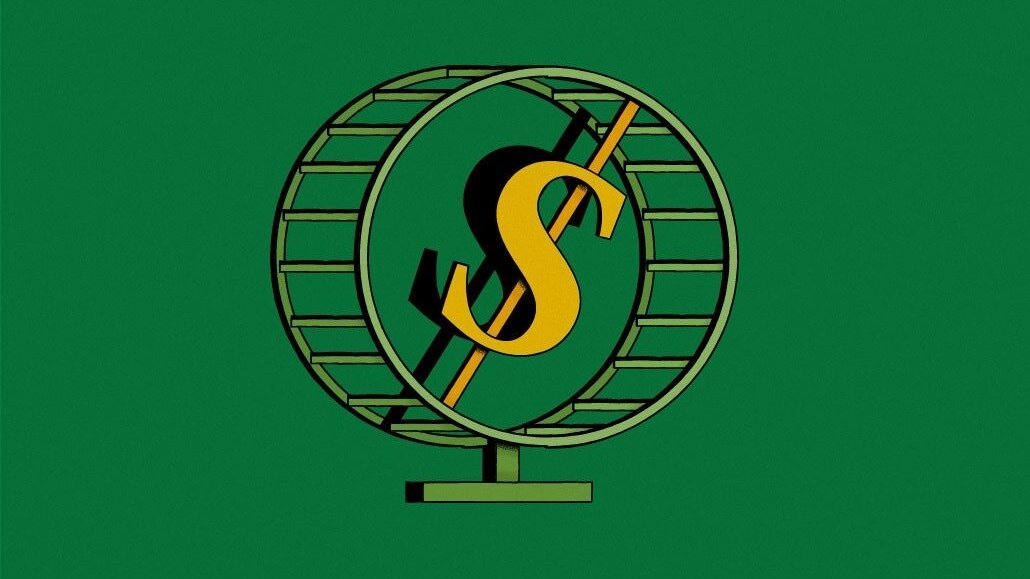Save 50% on a 3-month Digiday+ membership. Ends Dec 5.
Why Georgia-Pacific consolidated most retail media spending with seven networks after testing over 25 options

As a Digiday+ member, you were able to access this article early through the Digiday+ Story Preview email. See other exclusives or manage your account.This article was provided as an exclusive preview for Digiday+ members, who were able to access it early. Check out the other features included with Digiday+ to help you stay ahead
The rapid growth of the retail media space has continued apace this year. Some marketers are testing more retail media networks and betting on said networks as Google crumbles Chrome’s third-party cookie and first-party data becomes that much more valuable.
Figuring out which retail media network is worth spending on given the glut of new retail media networks can be a challenge for marketers. In recent years, Georgia-Pacific has vetted roughly 40 retail media networks, run tests with over 25 of them and ultimately consolidated 90% its retail media network spending with seven retail media networks including Amazon Advertising, Walmart Connect and Kroger Precision Marketing, among others. The other 10% of its retail media spend is dedicated to additional testing with retail media networks (either new or those that have evolved capabilities). The company did not say how much money this represents.
“There were almost 40 retail media networks we were vetting at the end of 2020 at one time because every time you turn around, you’d find another network saying, ‘Hey, let’s start working together,’” said Paras Shah, director of digital marketing at Georgia-Pacific. “We did almost two years of testing and learning, experimenting and vetting through different retail networks to see who we want to work with.”
Now as the cookieless future nears and the need for first-party data strategies has become more important, the CPG giant already has an understanding of what it needs out of retail media networks as well as what works and what doesn’t for its brands. At the same time, the company’s in-house programmatic team is now operating cookieless, according to Shah.
To vet the various retail media networks the CPG giant — which now spends over 20% of its media dollars on retail media networks — zeroed in on the CPMs of retail media networks versus national media networks, the capabilities they offer, the quality of the data, transparency and incrementality while testing and learning. Those factors helped Georgia-Pacific weigh each of the networks to then focus on the top retail media networks and spend across those.
“One thing I learned is that the quality of the data was not the same across each network,” said Shah, adding that data transparency from the networks is key. “While they told you that they had first-party data, they weren’t always giving first-party data for me to activate against them. Some of them were layering in additional sources of data like third-party data in order to get the cost down.”
Marketers vetting retail media networks should make sure to ask more probing questions of the various networks when it comes to data sources as well as measurement, noted Shah, to get more transparency from the networks about what they truly offer.
Ad position: web_incontent_pos1
“Every campaign I got back from every retail media network was alway like ‘This is the best thing since sliced bread,’” said Shah. “Some were coming to us to say it was a control versus expose methodology. Others would tell us they were calculating based on a different control. There were very different levels of measurement. To this day, there’s no one set form or methodology to consider incrementality [across retail media networks.] A lot of what we had to do was vet them on how they measure incrementality.”
Georgia-Pacific’s approach makes sense for a massive CPG company but may not be applicable for smaller brands looking to test out retail media networks now.
The company has a “product suite and distribution strategy that lends itself well to this aggressive strategy regarding retail media networks and cookie deprecation,” wrote Steven Frey, director of integrated media planning, Media by Mother, in an email, when asked how common this approach may be for marketers. “Any effort on their part to collect first-party data will not be scalable because it’s just not how anyone buys their products (i.e. no one goes directly to a paper towel brand to buy just their paper towels).”
Frey continued: “So the shift towards e-commerce and the birth of retail media is really the golden ticket for how a brand like this activates in the digital world because it gets them as much knowledge as possible about how people actually buy their products online (vs. general web-browsing activity, which is where most third-party cookie activity happens anyways.)”
Even if the approach to test out various retail media networks amid the cookie crumbling may not be easily replicated by other brands, a recognition of needing to change strategies to account for the cookie-less future makes sense.
Ad position: web_incontent_pos2
“The cookie-less future has arrived,” wrote Sean Carney, director, experience production at global brand experience firm Siegel+Gale, in an email. “Whenever long-standing, status quo practices are upended, it’s time to view it as an opportunity.”
More in Marketing

Ulta, Best Buy and Adidas dominate AI holiday shopping mentions
The brands that are seeing the biggest boost from this shift in consumer behavior are some of the biggest retailers.

U.K. retailer Boots leads brand efforts to invest in ad creative’s data layer
For media dollars to make an impact, brands need ad creative that actually hits. More CMOs are investing in pre- and post-flight measurement.

‘AI is permeating everything we do’: How Guitar Center developed 2 AI tools this year
This summer, the company launched a chatbot called Rig Advisor to help customers find the right instruments and products.
Ad position: web_bfu





